Lavally
Houses within 10km of this house
Displaying 53 houses.
Houses within 10km of Lavally
Displaying 53 houses.
| House name | Description | |
|---|---|---|
| Castle Taylor/Ballymagrath | The house at Castle Taylor, originally known as Ballymacrath, was built adjacent to a tower house. The Taylor family had been settled there since the 17th century. In 1837 Lewis recorded it as the seat of Gen. Sir. J. Taylor. In 1894 and 1906 it was the residence of Walter Shawe Taylor and was valued at £50. It is now in ruins. |
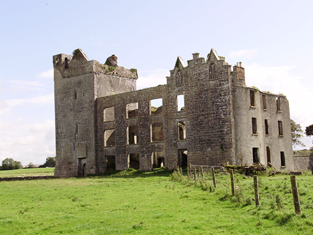
|
| Moyveela Lodge | The original Moyveela Castle was the home of the Browne family before their move to Mount Hazel. In 1786, Wilson writes that Moyveela was the seat of Andrew Browne. At the time of Griffith's Valuation a large portion of the townland was part of the Vandeleur estate and was leased to James Kineen. He occupied a property which later became known as Moyveela Lodge which is still extant. Over 300 acres as well as two caretakers' houses were in the possession of Andrew Browne whose address in the 1870s is still given as Moyveela and Mount Hazel. | |
| Rinville House | Lewis records the house at Rinville as the seat of T.L. Athy in 1837. Earlier in 1814 it was the residence of Phillip Athy. At the time of Griffith's Valuation it was valued at £48 and was occupied by Randal Athy. A second property in the townland of Rinville West was leased by the Athy estate to Patrick Blake. In 1906 Rinville was owned by Edmond J. Athy and was valued at £43. It is now an ivy covered ruin. Part of the demesne lands are a public park maintained by Galway County Council. A gate lodge is still extant but unoccupied. A graveyard for the Oranmore area has been established on part of the demesne lands. |
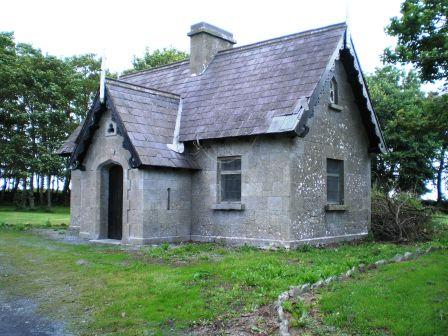
|
| Cottage (Dunkellin) | In 1837 Lewis recorded Cottage as the seat of J. Ryan. Catherine Ryan was leasing the house from Randall Athy at the time of Griffith's Valuation when it was valued at £17. The house at Cottage was part of the Athy estate which was sold in the Encumbered Estates court in July 1857. The new owners, John Edmond Crofton Kelly and Edmond Walker Kelly offered it for sale again in June 1866. At this time the house at Cottage was leased to the representatives of Thomas Redington for 21 years from 1856. By 1906 it was owned by Charles V. Pratt together with 150 acres of untenanted land. The ruins of the house and other buildings are visible at the site. |

|
| Prospect Hill | At the time of Griffith's Valuation the house and buildings at Prospect Hill were in the ownership of Lord Wallscourt's trustees and were valued at £21. Earlier, the Ordnance Survey Field Name Books mention Mr. Dawson of Prospect, as the agent to the Wallscourt estate. There is still a house at the site but it is not the original one. |

|
| Seafield | Seafield House is no longer extant though evidence of walled gardens and out buildings are still visible. It was the residence of Robert Blake in 1814. In 1824 it was the residence of Henry Blake who offered it for letting in the ''Connaught Journal'' in May of that year. The Ordnance Survey Field Name Books noted Seafield as the residence of Mr. Blake's steward. At the time of Griffith's Valuation it was leased by the Blake estate to Matthew Fynn and was valued at £6. | |
| Furzepark House | This house is noted on the 1st editon OS Map as Furze Park House but it may later have been known as Seafort House. The Ordnance Survey Name books describe it as a "bathing lodge, belonging to Mr. J. Smith, Loughrea". It was leased by the Blake estate to Martin Morris at the time of Griffith's Valuation when it was valued at £9. By 1906 the buildings owned by Lord Wallscourt at Treanlaur were valued at almost £2. Substantial ruins of this house are still visible. |

|
| Ballynamanagh | At the time of Griffith's Valuation, Thomas Redington was leasing a house valued at £4 at Ballynamanagh, barony of Dunkellin, to John Caven. It was accompanied by almost 100 acres. Kelly noted that it had been the property of Mr.Burke of Carheen for over 100 years but was later in the possession of the Redington estate. This house is still extant and occupied. |
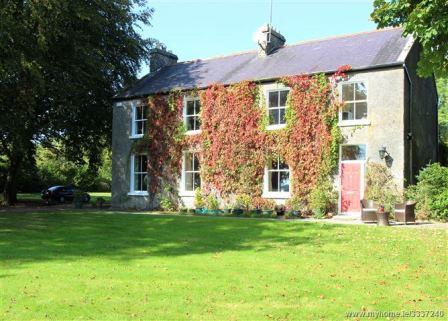
|
| Cregaclare | The Ordnance Survey Name Books mention that Cregaclare House was built in 1802. In the 1830s it is described as having elegant gardens and a Hot House producing various types of fruit. Cregaclare House is recorded by Lewis as the seat of J.S. Lambert in 1837. At the time of Griffith's Valuation it was leased by James Lambert to Lord Clanmorris and was valued at £50. Bought by Lord Clanmorris in the late 1850s, it was still his property in 1894 and 1906. Only the ruins of a basement and remains of stable yard and gateways are visible. Mausoleum located at M470118 in the ruins of old RC church. This was originally a burial place for the Bingham family (Lords Clanmorris) but those buried there were later re-interred in the grounds of the Church of Ireland, Ardrahan. |
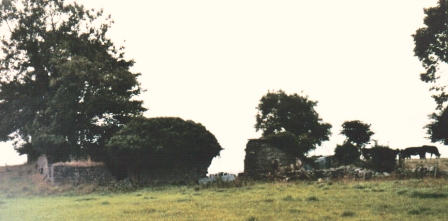
|
| Aggard | In 1786 Wilson refers to Aggard as the seat of Mr. Lambert. In 1837 Lewis recorded Aggard as the seat of J. Lambert. The property at Aggard was being leased by the Lambert family from Reverend Thomas Kelly, at the time of Griffith's Valuation. Reverend Kelly's estate, including Aggard, was offered for sale in the Encumbered Estates court in February 1857. In 1894 the seat of J.W.H. Lambert. Aggard House is still extant and occupied. |
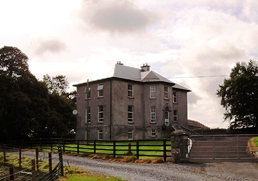
|
| Ballymore | Wilson mentions the seat of Mr. Rathbourne near Craughwell in 1786 though he does not name the house. In 1837 Lewis recorded Ballymore as the seat of R. Rathbourne, who continued to reside there until the 1880s. Griffith's Valuation shows that Richard Rathbourne held it from the Clanricarde estate. This may be the house noted by Slater as part of Lord Clanmorris's estate in 1894. Ballymore is still extant and occupied together with an extensive range of outbuildings. |
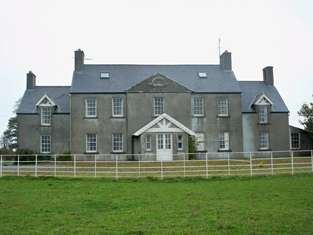
|
| Tyrone | Tyrone was built in the early 19th century. It is described in the OS Name Books as "a beautiful residence" in the 1830s. At the time of Griffith's Valuation, it was in the possession of Christopher St.George and was valued at £50. In 1894 Slater notes it as the seat of Robert J.K. St.George. The family ceased to live there in the early twentieth century. Its ruins can be seen overlooking the estuary of the Clarin river. |

|
| Moyode | The seat of the Persse estate for many years. At the time of Griffith's Valuation it was the seat of Burton Persse. In 1894 Slater refers to it as the seat of De Brugh Persse. In 1906 it was owned by Lord Ardilaun and was valued at almost £73.Only some ruins of Moyode Castle remain although elements of the stable yard still exist. |

|
| Kilcolgan Castle | Christopher St. George, residing at Kilcolgan Castle, is described as a resident proprietor in county Galway in 1824. In the 1830s Kilcolgan Castle is described as the property of A.F. St. George. This house, part of the St.George estate, was leased by Matthew St.George from Christopher St.George, 1855. At that time Matthew St. George was acting as agent for the Rathbourne estate. Earlier, the Ordnance Survey Field Name books record that he was acting as agent for the estate of Patrick French in the nearby parish of Ballynacourty. In 1894 Slater refers to "Kilcolgan House" as the residence of James St. George. |

|
| Newtown Kilcolgan | Arthur St.George was leasing a house, valued at £8, at Newtown Kilcolgan, from Christopher St.George in 1855. Evidence of estate buildings still survive in this area though the house appears to be gone. | |
| Kilcornan | In 1814 Kilcornan House was the residence of T. & C. Redington. Later, in 1837, Lewis recorded it as the seat of T. Redington. At the time of Griffith's Valuation Thomas Redington was the owner of the property, then valued at £100. In 1894 Slater referred to it as the residence of C.T. Redington. In 1906 it was the property of Anne Redington. Kilcornan House is still standing and now forms part of the Brothers of Charity services complex located in the grounds. |

|
| Hollypark | In 1814 Hollypark was the seat of Pierce Blake and at the time of Griffith's Valuation the property of Peter Blake when it was valued at £20. In 1894, Slater referred to it as the seat of Col. M.P. Blake. In 1906 Maria C. White held the mansion house at Hollypark. It is still extant and occupied. |
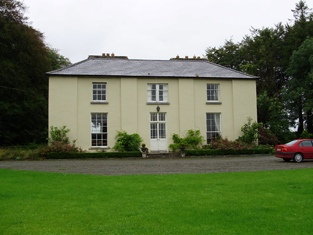
|
| Rahasane | In 1786 Wilson refers to Rahasane as the seat of Mr. French. Lewis records Rahasane as the seat of R.French in 1837. Held in fee by Thomas A. Joyce at the time of Griffith's Valuation when it was valued at £45. The Landed Estates court sale notice of June 1871 mentions that Rahasane House was built by Robert Joseph Ffrench at a cost of £10,000. This, the original Rahasane House , is described as " in ruins" on the 25-inch Ordnance Survey map of the 1890s. A later Rahasane House is shown on the 1933 ediiton of the six-inch Ordnance Survey map, located in Pollnagerragh West townland, (M474172). While there is no trace now of the original house built by R.J. French, some estate architecture survives. |
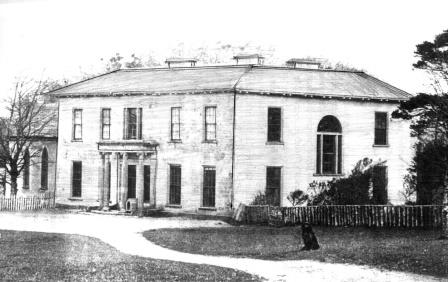
|
| Cloghballymore | Originally a tower house owned by the Kilkelly family, Cloghballymore House, was extended a number of times by the various families who held the estate over three centuries.. The National Inventory of Architectural Heritage indicates that the main house at the site was constructed by Marcus Lynch in the eighteenth century. In 1906 it was owned by Llewellyn Blake and was valued at £18. It was later given by him to a missionary order and maintained for some time as a seminary. The building is still extant and now used as St. Columba's nursing home. |
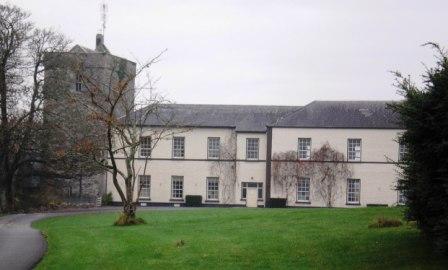
|
| Rockfield House | Melvin states that throughout the 18th and 19th centuries the house at Rockfield was occupied by Burkes, Brownes, Blakes and Concanons. At the time of Griffith's Valuation it was occupied by Patrick J. Blake and was valued at £26. In 1837 Lewis recorded it as the home of M. Browne. Wilson, writing in 1786, refers to it as the seat of Michael Browne. In 1906 it was owned by Richard A. Nugent when it was valued at £27. The Encumbered and Landed Estates Court sale notices give the impression that the house was sometimes known as Rockville. Though the house no longer survives the gate lodges are still occupied. |

|
| Stoneleigh | The house in Laghtphillip townland, part of the Lynch estate, was leased to James Stanley in 1855. In 1906 the house was owned by Hugh Greaney and was valued at almost £7. The house is still standing but derelict. A new house exists on the site and "Stoneleigh House" appears at the entrance gate. Writing in 1976, Kelly noted that the house was built by the Stanley family due to its salubrious site. |

|
| Stradbally | Griffith's Valuation shows that Christopher St.George had what are described as "offices" valued at £16 in the townland of Stradbally West, parish of Stradbally, barony of Dunkellin. This was the stable complex for Tyrone House and adjacent to the walled garden which was part of the estate. |

|
| Monksfield | The house at Monksfield had originally belonged to the Morgan family who were of Welsh origin. Evidence from the 17th century records shows that they acquired land in this area in the later 17th century. In 1837 Lewis recorded Monksfield as the seat of Capt. Morgan. It had to be sold in the mid-19th century due to debts. By the 1850s it was the residence of Thomas Shawe-Taylor.In 1906 it was owned by Walter Shawe Taylor and was valued at £14. Kelly, writing in 1976, indicated that the estate was sold to the tenants around 1908. After the estate was divided, the house continued to be occupied well into the twentieth century but is now a ruin surrounded by farmland. |
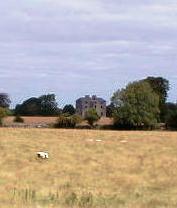
|
| Lambert Lodge (Kilquain) | In the 1830s Kilquain was described as "Proprietor J. W. H. ambert, Esqr., Aggard. No agent. This townland is farmed by Carbit Lambert, Esqr. Proprietor's brother, and on which is built a superb house and offices under a bulk rent of £200 per year. There is a garden and orchard and an interesting demesne". In 1855 the Lambert house at Kilquain was occupied by Cuthbert Lambert leasing from John Lambert. It is still extant and occupied. |
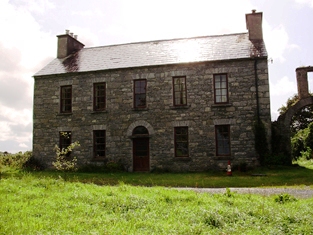
|
| Derryhoyle | In 1855 the house at Derryhoylemore, parish of Lickerrig, barony of Dunkellin, was leased by Robert O'Hara to Samuel Wade. In 1906 the house at Derryhoyle was valued at £12 and was owned by Robert F. O'Hara who also owned over 100 acres of untenanted land there. A house is still extant at the site. |

|
| Castle Lambert | Castle Lambert was built in the later 18th century. At the time of Griffith's Valuation it was owned by Walter Lambert and was valued at £20. It is no longer extant, only the bell tower in the yard remains. |

|
| Moor Park | Occupied by Giles Eyre Lambert at the time of Griffith's Valuation when he was leasing it from Walter Lambert. It was valued at £20. Later the seat of Frank Shawe Taylor who was assassinated nearby in 1920. There is still a large house at Moor Park though the National Inventory of Architectural Heritage indicates that this is not the original house. |
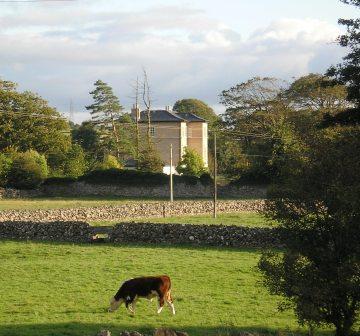
|
| Newford | In 1786, Wilson mentions Newford as the seat of Edward Browne. In 1814 Thomas Tighe is recorded as residing at Newford. Patrick Fitzpatrick of Newford House, Athenry is listed as a subscriber to ''Lewis' Topographical Dictionary'' (1837). The house was later part of the Whaley and Perry estates in the 1850s and was offered for sale in the Encumbered Estates court in 1852. Portion of Newford later bacame incorporated into Mellows Agricultural College farm. The house is no longer extant. | |
| Prospect | Prospect Lodge is recorded as the residence of T. Burke in 1814. At the time of Griffith's Valuation it was leased by Thomas Courtney to John Lopdell. It is still extant and occupied. |
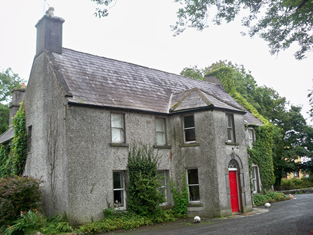
|
| Castleturvin | Francis Bruen was leasing Castleturvin to Reverend Mark Perrin at the time of Griffith's Valuation. The Ordnance Survey Name Books claim that the Turvin family were the proprietors in the 1830s. Castleturvin House is still extant and occupied. The entrance gate indicates that the house dates from 1767. |

|
| St. John's | This house was built later in the nineteenth century. It appears as "St. John's" on the 25-inch Ordnance Survey Map of the 1890s. The Corbishley family occupied St. John's until the early twentieth century when an auction was held on the premises. The property was purchased by the Finn family but members of the Corbishley family remained living in the house for some years afterwards. St. John's remained the property of the Finn family until later in the twentieth century. In 2005 it was sold. Extensive works have since been carried out at the entrance including new gates and railings. | |
| Cullairbaun | Occupied by James Perry at the time of Griffith's Valuation. | |
| Athenry House | Athenry House was built in the late 18th century. In 1837 it was the seat of J. Lopdell. It was offered for sale in the Landed Estates court in November 1876 as part of the estate of Wm. Vesey Fitzgerald Hickman. Part of the original house is no longer extant and construction work has taken place in the area. |
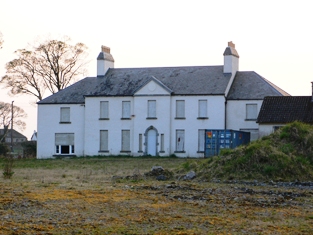
|
| Willmount | Willmount House leased by Thomas Mahon from William Smith at the time of Griffith's Valuation when it was valued at £10. In the 1870s Henry Morgan, who owned over 200 acres in county Galway, was residing at Willmount. In 1906 it was the property of John McCoy. The original house appears not to have survived though there is evidence of a farm yard and walled garden close to Willmount Graveyard. Extensive modern farm buildings exist on the site. | |
| Turoe | Wilson refers to "Tourow" as the seat of Mr. Dolpin in 1786. Oliver Dolphin owned Turoe at the time of Griffith's Valuation when it was valued at £20. Slater refers to it as the seat of Miss Dolphin in 1894. In 1906 the mansion at Turoe was the property of Hubert Dolphin and was valued at £16. The original house is no longer extant but evidence of the stable yard and walled garden can be seen at the site, close to Turoe Pet Farm. |
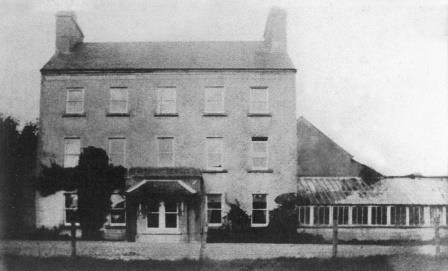
|
| Carnmore | The OS Name Books record Mr. Blake of county Mayo as the proprietor of Carnmore in the 1830s. At the time of Griffith's Valuation Valentine O'Connor Blake was leasing a house valued at £4 and over 100 acres to Arthur Veitch. Some ruins remain at the site. | |
| Thornpark | At the time of Griffith's Valuation the property at Carrowmoneash, parish of Oranmore, was leased by the representatives of H. Butler to Anne Butler/K.H. Blake. Burke's Landed Gentry (1958) states that Xaverius Henry Blake Butler purchased Thornpark, part of his mother's dowry, in the Landed Estates' Court in April 1860. Sir Henry Blackall states that Xaverius Blake Butler bought Mount Vernon, which he renamed Thornpark, from his nephew Henry.By 1906 the house at Carrowmoneash was owned by James Blake Butler and was valued at £26. Thornpark House is now the Oranmore Lodge Hotel. See www.oranmorelodge.ie for more information. |

|
| Frenchfort | Frenchfort became a Blake property in 1780 when Michael Blake married Anne Ffrench of Frenchfort. Wilson mentions the house as his seat in 1786. He is described as a resident proprietor in 1824. At the time of Griffith's Valuation the house at Frenchfort in the parish of Oranmore was occupied by his grandson, Theobald Blake. The original house does not appear to be present now but the walled garden layout is still visible. |
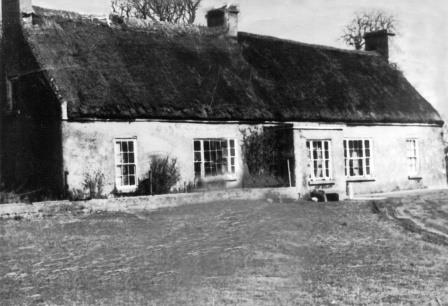
|
| Oranbeg | At the time of Griffith's Valuation the property at Oranbeg was leased by the Fitzgerald Vesey estate to George Hill and valued at £8. It is labelled Vesey Lodge on the 25-inch Ordnance Survey map of the 1890s. It is no longer extant. | |
| Rocklands (Oranmore) | Rocklands was occupied by George Ingham in the 1850s when it was valued at £13. In 1906 it is recorded as the property of Isabella Ussher and was still valued at £13. The house is still extant and occupied. |
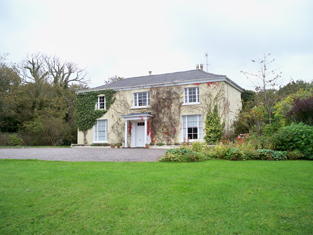
|
| Oran Castle | In 1786 Wilson mentions Oranmore as the seat of Denis Blake. In 1814 and again in 1837 Oranmore Castle is recorded as the seat of Walter Blake. At the time of Griffith's Valuation he was leasing a property, valued at £10, in Oranmore townland, to Martin Grady. Pádraig Lane writes that Walter Blake sold Oran Castle to James Dillon Meldon. The castle was refurbished by the King family in the twentieth century. |

|
| Rockmore or Blakeland Lodge | . This property is named as Blakeland Lodge on the 1st edition OS Map and in the Ordnance Survey Name Books.It appears as Rockmore on the 25-inch map of the 1890s. At the time of Griffith's Valuation it was occupied by William Kelly and valued at £15. In 1906 it was the property of Raymond Kelly and was still valued at £15. It is still extant and has recently been renovated. |
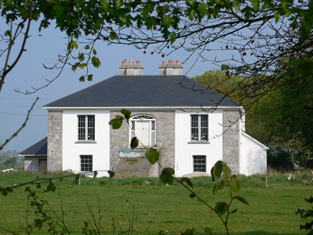
|
| Tallyho Lodge | Tallyho Lodge was the home of Burton Persse, Sen, in the 19th century. The house is no longer extant but traces of the walled garden remain. |

|
| St. Michael's/ Moneyteige | The house at St. Michael's is described in the Landed Estates court notice in April 1885 as "a handsome modern residence which cost £2000 to build". At the time of Griffith's Valuation, Edmund Davies held the townland of Moneyteige including a house valued at £2. Writing in 1976, Kelly noted that the house was built by a doctor named Davis, who bought the townland from the Lamberts of Castle Ellen. Part of the building is now roofless. | |
| Rockhill House | The earlier house at Rockhill was the residence of Daniel Higgins in 1814. At the time of Griffith's Valuation, it was occupied by Dominick D'Arcy and was valued at £9. A new house appears to have been built in the latter half of the nineteenth century and, in the 1870s, it was the seat of Lionel D'Arcy. Rockhill is stil extand and well-maintained. |
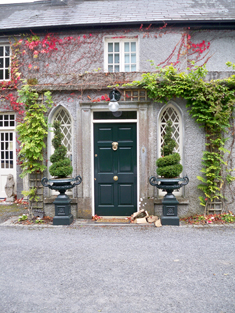
|
| Raheen (Athenry) | Raheen House is associated wth the Lopdell family although there was only a herd's house valued at £3 and gate lodges recorded there at the time of Griffith's Valuation. In 1894, however, Slater noted it as the residence of Mrs. Lopdell. Raheen is still extant. |
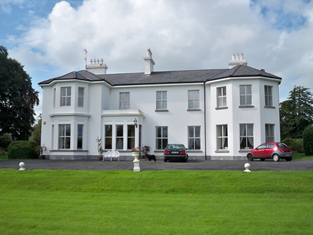
|
| Rinville Lodge | At the time of Griffith's Valuation, Patrick Blake was leasing a house valued at £12 at Rinville West, barony of Dunkellin, from Randal Athy. This appears to be the house known as Rinville Lodge on the first edition Ordnance Survey map. By the 1890s it had become known as Bay View the name by which it is still known. |

|
| Boyhill House | Richard Persse was leasing a house valued at £5 from Burton Persse at Boyhill, barony of Athenry at the time of Griffith's Valuation. In 1906 it was still the property of Burton Persse who also held almost 300 acres of untenanted land in the locality. Some ruins and farm buildings still remain at the site. | |
| Mulpit House | Mulpit House is shown on the first edition Ordnance Survey map, published in 1842. At the time of Griffith's Valuation, it was being leased from Francis Bruen by Walter Taylor and was valued at £8 10s. The property included a corn mill though this is noted as "in ruins" on the Ordnance Survey map. Mulpit House is still extant and occupied. |
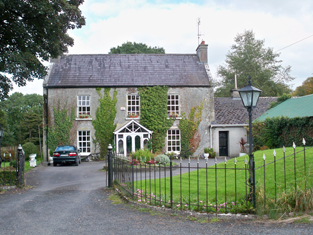
|
| Carrigeen House | At the time of Griffith's Valuation, Carrigeen House was leased by John Connolly from the Joyce estate when it was valued at £5. It is labelled "in ruins" on the 25-inch map of the 1890s. | |
| Park | In 1786 Wilson refers to Park as the seat of Mr. Burke, half a mile from the Monivea-Galway road. This may refer to Park townland in the barony of Athenry, which was in the possession of James Perry at the time of Griffith's Valuation. | |
| Ballymanagh (Dunkellin) | In 1786 Wilson writes that Ballymanagh was the seat of Mr. Burke. Ballymanagh House is shown on both the 1st and 25-inch edition Ordnance Survey maps. At the time of Griffith's Valuation it was leased by James Burke from the Redington estate when the house was valued at almost £2. A house is still extant at the site. | |
| Carheen House | At the time of Griffith's Valuation Carheen was occupied by James Bourke, leasing from Peter Blake. The house was valued at £3. Carheen is still extant and in use. |
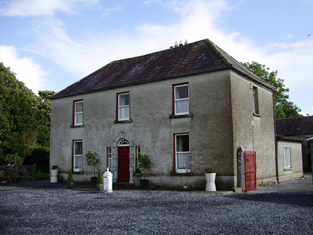
|

